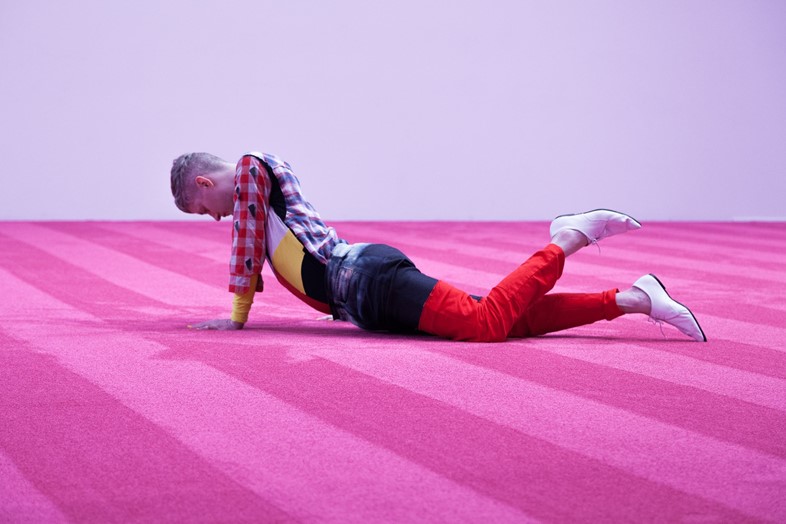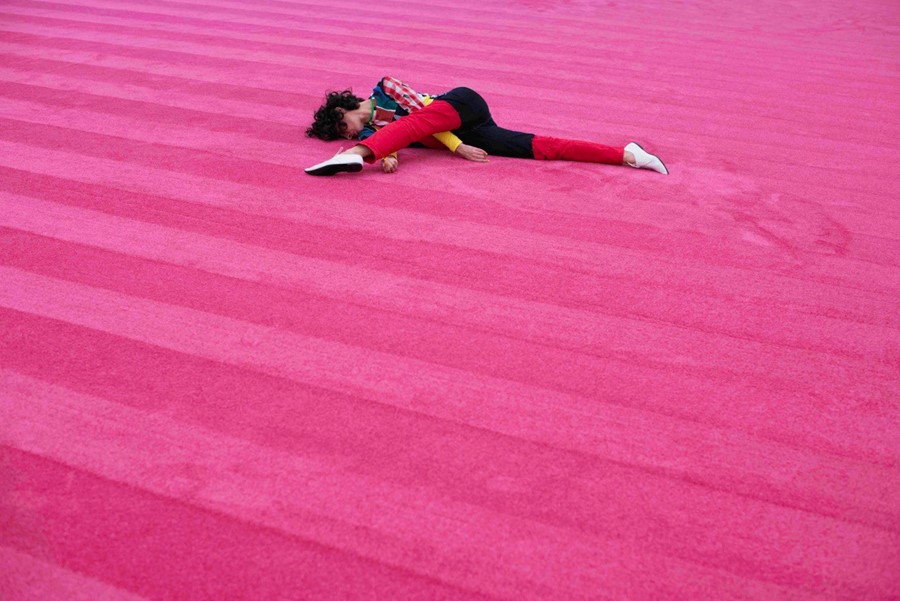“Stillness, and slowness... is a form of resistance – it becomes anti-capitalistic,” dancer and choreographer Maria Hassabi tells Suze Olbrich, before a stunning London show
Artist, choreographer, dancer and performer Maria Hassabi favours an in-between existence. Having left her native Cyprus to study performance at California Institute of the Arts in the early 90s, she spent much of her time with visual artists, and has maintained close personal and professional ties with the art world ever since. While her choreographies have long been informed by the Judson Dance Theatre’s revolutionary Postmodernism in her adopted home of New York – as well as popular culture, high fashion and street life – Hassabi’s practice as staged in theatres, galleries, museums and public arenas continues to evolve as an exchange with other disciplines – poised, just so, betwixt dance and art. These striking, democratic pieces have steadily attracted awards, critical plaudits and popular praise since she began showing just under two decades ago.
More recently, Hassabi has been exploring the potential of stillness and slowness, so that her dancers momentarily appear to embody sculptures, corporeal subject turned living object. In 2016, her minimal live installation PLASTIC saw her dancers incrementally shift between poses throughout MoMA’s galleries and walkways at almost imperceptible speeds. The theatrical reimagined as month-long exhibition. Her latest piece, created for K20, Kunstsammlung NRW, Düsseldorf, STAGING: Solo #2, is an evolution of her diptych, STAGED? (produced solely for a theatrical setting,) and STAGING (initially created to be presented at Documenta 14 Kassel and Minneapolis’ Walker Arts Centre). Hassabi fine-tuned this powerful ‘anti-spectacle’ for London’s The Store X last weekend as part of progressive, international performing arts festival, Block Universe, ahead of a transfer to Paris’ Pompidou Centre in early June. The mesmerising, looping, two hour-long movement script was performed at pulse-stilling pace upon a vast and vivid soft pink carpet to a hushed ambient soundscape by a sole figure – alternately, Hassabi and collaborator, Oisín Monaghan – bedecked in an eye-catching patterned patchwork costumes designed by Victoria Bartlett.

On the contrast between presenting work in theatres and art spaces…
“In a theatre, viewers will turn off their phones and give you an hour of their lives, and so my works become very tense as people would feel uncomfortable leaving. During a live installation in a museum or exhibition setting, that’s gone, because there’s no beginning and end – it’s all day long. People will take photographs or talk with their friends, and maybe watch quietly for ten minutes or half an hour. Also, because we take away the ‘wall’ so it’s one shared space, people feel like there aren’t any boundaries, and the craziest things happen.”
On performing at incredibly slowly…
“Your body releases so much adrenalin in the first few minutes of being on stage, and in [regular shows] you get rid of it by moving, but with these works, it never goes. So [even after an hour] your body is still shaking, and in the weirdest places like your eye, but there’s nothing you can do as it’s simply nerves. All these meta movements that start happening create something that was not choreographed – something that happens within that present moment – that’s produced by your body, your physicality, your mind. You also feel everything. Your awareness is at its peak, and you take advantage of every inch, while in every day life, I constantly trip.”

On stillness as a form of resistance…
“The idea of working with stillness, and slowness, really came as I wanted more time to see people and things. But then you realise that it is a form of resistance – it becomes anti-capitalistic. I am asking people to slow down, even the viewers. The works are so quiet, and that same quietness is required from them.”
On creating space for reflection in major cities…
“I think it’s beautiful. Being in these busy cities [like London and New York] – these destructive cities, in many ways – and still taking time to focus, to zoom in, if you want to.”

On taking inspiration from superstars and street people...
“While there is depth to my concepts, the work starts from the outside, as an image, and then [travels] to the inside. The imagery that I use comes from a lot of places, there are poses from [pop culture icons] such as Jane Fonda in this piece, for example. There’s also a repeating image, partially inspired by homeless junkies. If you don’t see them in a humanistic way, they are just people who don’t produce capital and take up space in this uncomfortable way.”
On working with pedestrian motion…
“Originally, I was inspired by 1960s Postmodernism, the choreographers that initially brought pedestrianism into performance. And I held onto it, but found my own reasoning – to reach a bigger audience, outside of the dance world with its virtuosic abstraction of physicality. I wanted my mum to be able to relate to what I was doing.”
On the anti-spectacle…
“Since I started making these quiet works, I’ve been playing with the idea of not demanding attention. Performance is [usually] so much more: ‘Look at me! I’m performing!’ And I’m removing that, quieting it down. So, if you want to fall asleep [in the theatre], you can fall asleep. If you want to look at us, you stay with us. That’s my taste, and it will stay this way for a while. Or maybe I’ll make something really loud next.”
Block Universe runs until June 3, 2018 across various venues in London.
